As Bappa heads over to our homes this week, we look at his other favourites that make it to the offering platter
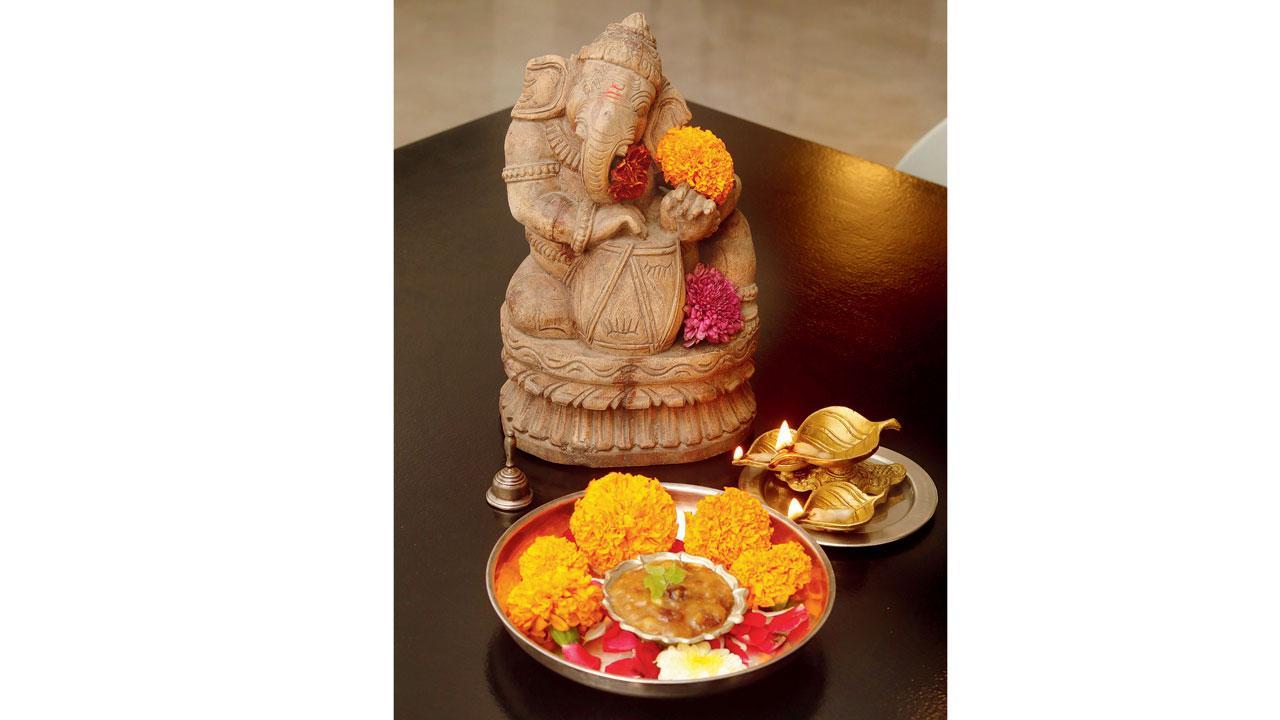
Panchamrut is known as the nectar for gods and by the gods, and in some cultures, it is also used to bathe the elephant god. PIC/M FAHIM
A gaggle of children going from door to door, singing aartis and collecting lip-smacking naivedyas (offerings made to god) is one of the fondest memories 57-year-old cookbook author Sudha Menon has of living in the Railway colony in Dombivli. Like any other society in the city during 11 days of Bappa’s visit, this one too was a cacophony of beautiful chaos because bringing the elephant god home means pulling out all stops.
ADVERTISEMENT
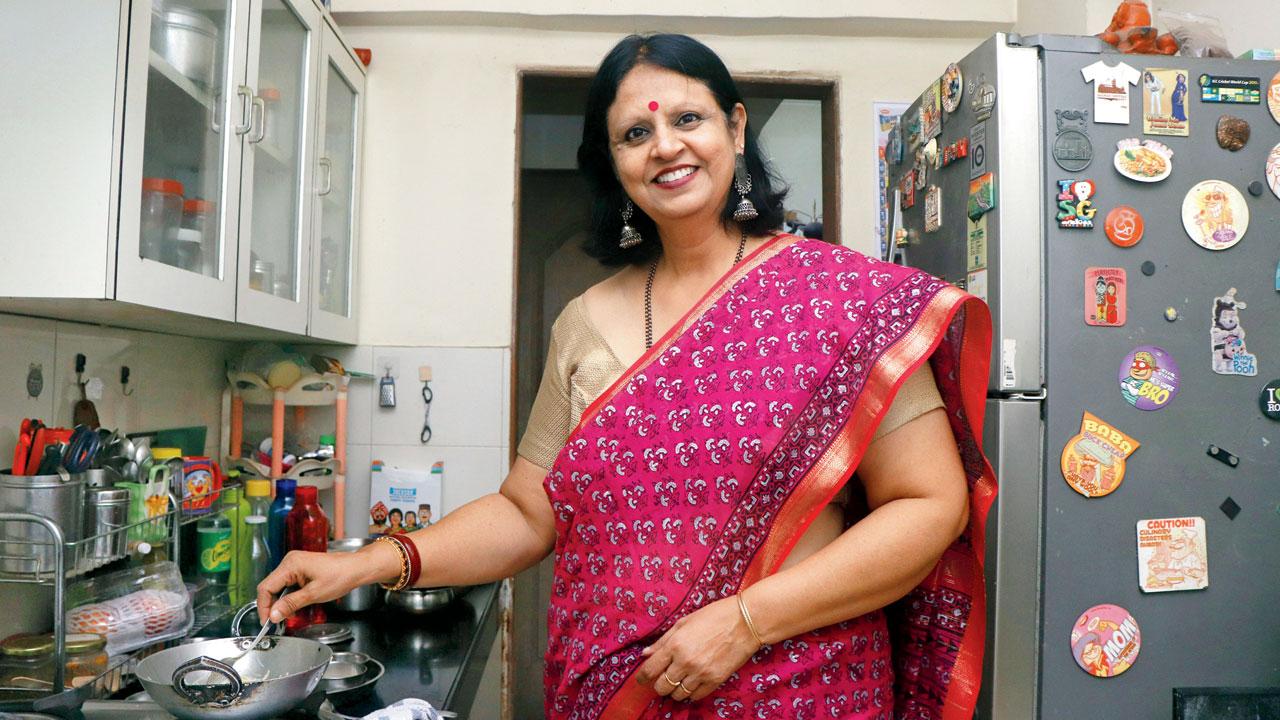 Prabha Kini makes a special seviyan kheer that is part of the naivedya offered on the first day to Bappa. PIC/ANURAG AHIRE
Prabha Kini makes a special seviyan kheer that is part of the naivedya offered on the first day to Bappa. PIC/ANURAG AHIRE
“The excitement of waiting for a dollop of the sweet, gooey panchamrut to be plopped on your cupped hand is something else,” reminisces Menon. “A must in every naivedya thali, it is presented to Ganpati Bappa before the kids polish it off. My amma made one of the best panchamruts in the area; everyone said she was gifted.” The Malayali who grew up in a quintessential Maharashtrian neighbourhood, adds, “For Appa, who worked for the Indian Railways and headed a union, bringing people together—either to listen to their grievances or for festivities meant a lot. It was embedded in the hustle and bustle of middle-class life. My siblings and I would be in a race to see who eats the last bit of the panchamrut first,” she chuckles as she gets nostalgic over a phone call from Pune, where she now lives.
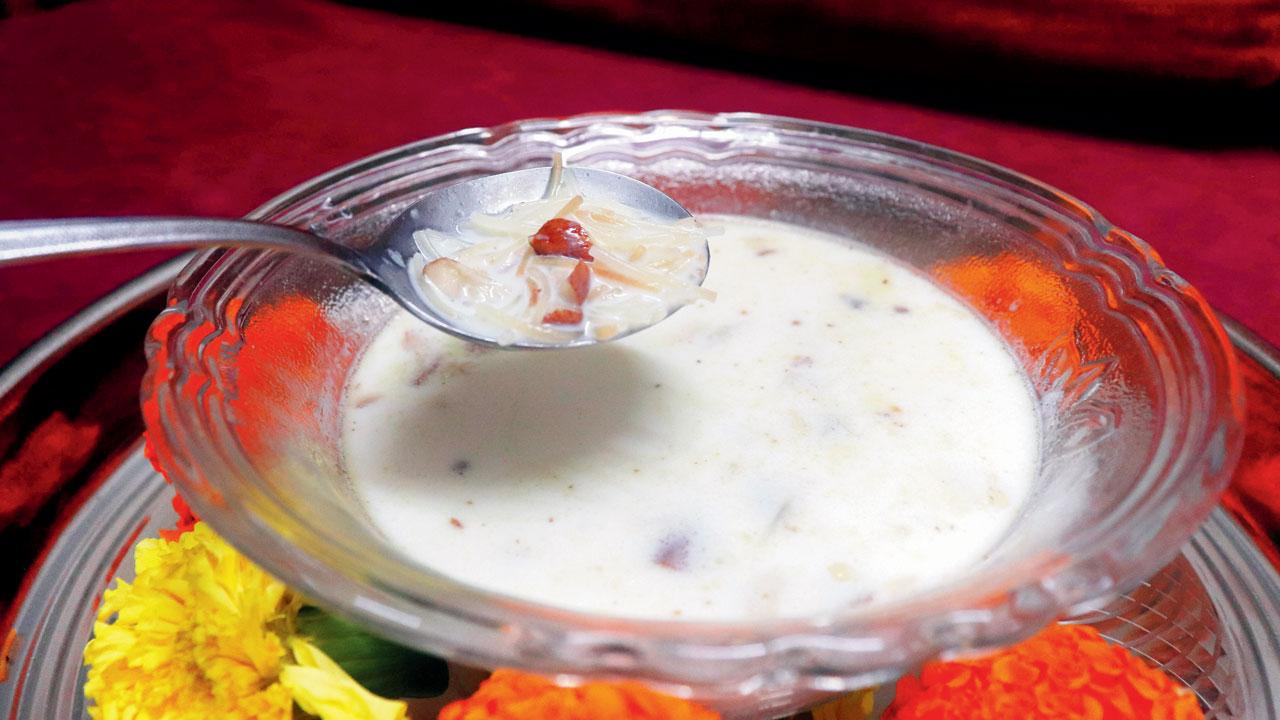
The Malayali panchamrut her mother made is different from the Maharashtrian version which has milk or curd. Here, over-ripe bananas are the hero of the dish. Mandevli is a tiny neighbourhood in central Chennai that houses the famous Mundagakanni Amman Temple. Here, independent homes, lined with trees are a usual sight. This is where nutritionist and author Supriya Arun spent the formative years of her life. “Our home was not big,” she says, “but it wasn’t as small as the apartments in Mumbai are and this time of the year, it would be bustling with guests and the voice of my grandmother—who ruled the kitchen with an iron fist—instructing my mother.” Arun moved to Goregaon around 25 years ago and still lives there.
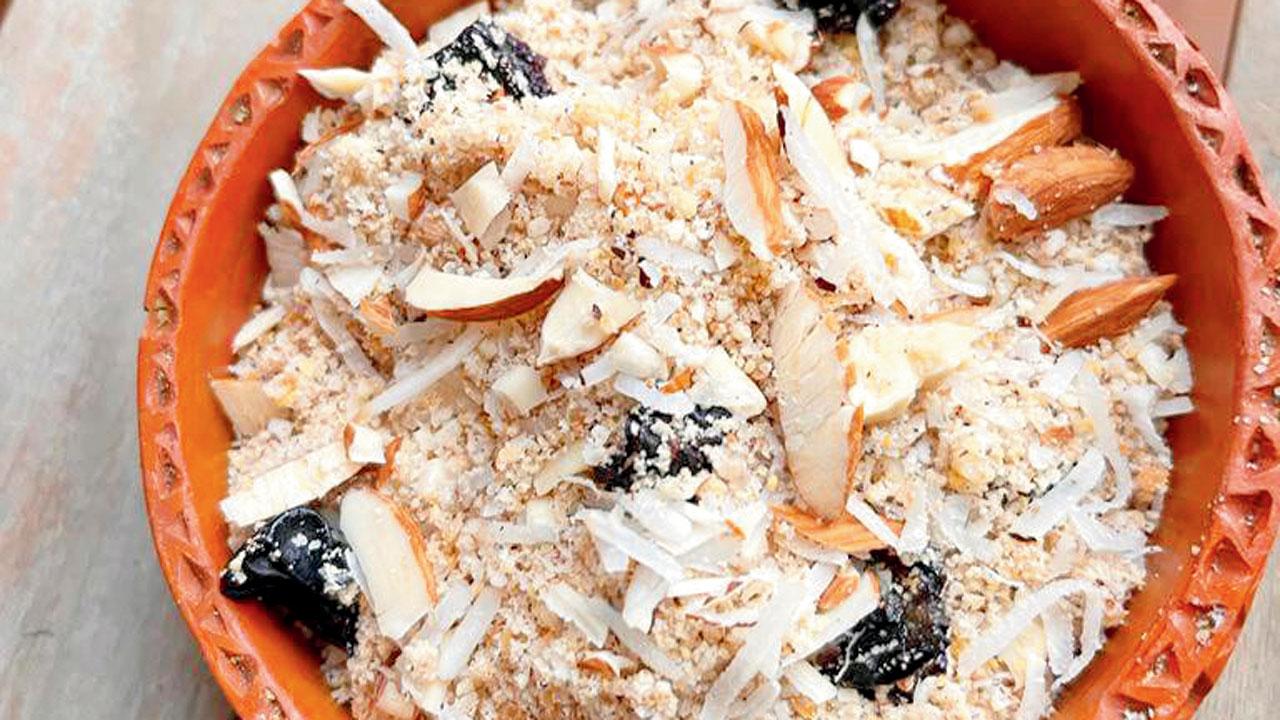
Panchkhadya, made of freshly grated coconut and used as a superfood provides sustenance. The version made with dried coconut (right) has a longer shelf life and makes for a healthy snack
The region has its unique take on what can be offered as naivedya to Ganpati. Sugiyan was ironically invented centuries ago in Tamil households as a leftover snack during Ganesh Chaturthi celebrations, but found its way to Bappa’s naivedya thali. “In Mandevli, Ganpati visits our home only for a day so that meant many visitors and thus, heaps of leftover food, especially medu wada batter. So, we add a pinch of salt and asoefatida and thin it down with water. Then, we shape tight balls out of the leftover modak filling, dip it in the batter and deep fry,” explains Arun, whose Maharashtrian neighbours are completely in love with the dish. “It tastes like modak but also not like it, leaving your palate confused. Our neighbours call it medu wada modak,” she chuckles.
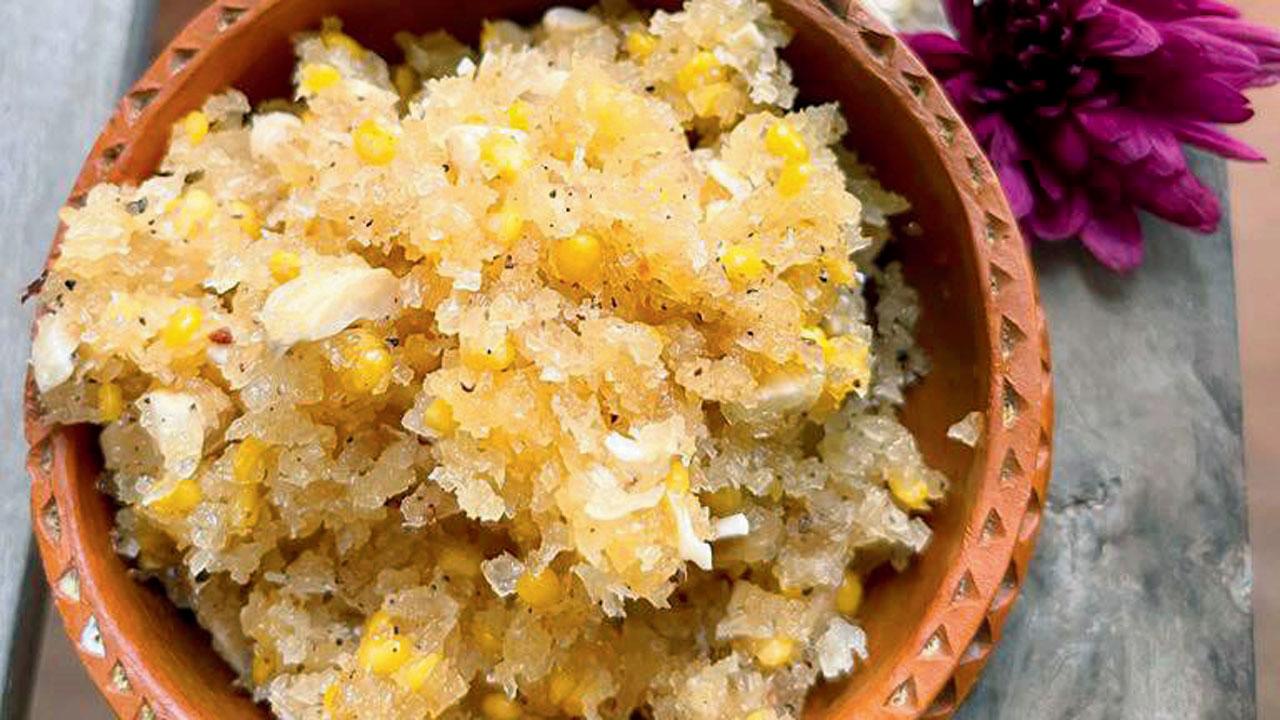
In Karwar, naivedya is incomplete without seviyan kheer. Prabha Kini has been making it at her Santa Cruz home ever since she got married, 45 years ago. “At my husband’s home, this kheer is a must on the first day. Four decades on, I have continued that tradition, albeit with my finishing touches. Once the pooja is done, I add a bit of vanilla custard powder to the kheer and keep it to chill in the fridge. It makes the kheer thicker and gives it a phirni-like texture once it cools down. I add a spoon of rose syrup to my bowl because I like it that way,” she adds with a guilty cackle.
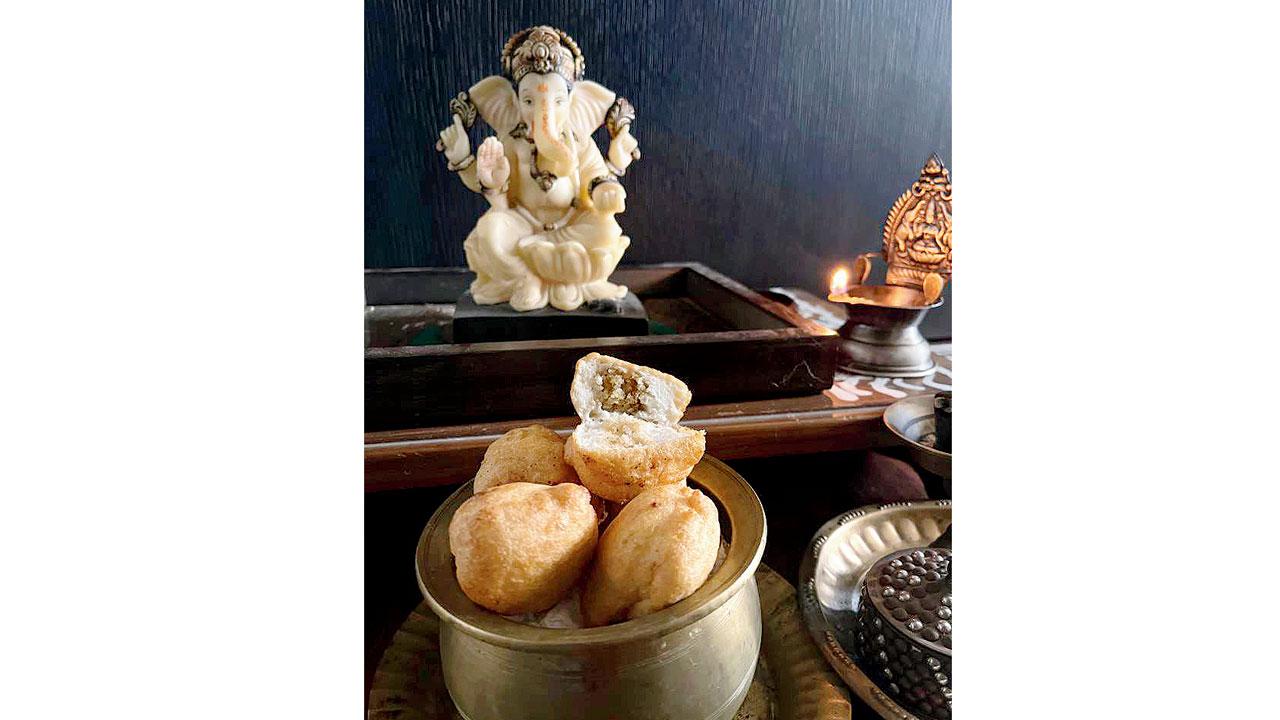
Sugiyan is the Tamil offering made to Ganesha and is made with leftover medu wada batter and modak filling
In Maharashtra, panchkhadya is a must on the naivedyacha taat. It is a blend of five ingredients starting with the Marathi alphabet ‘kh’: Khobra (dried coconut), kharik (dried dates), khus khus (poppy seeds), khadi sakhar (rock sugar) and khishmish (raisins). Cookbook author Roopa Nabar says, “It was a superfood even before superfoods became a trendy term; a beautiful amalgamation of five flavourful wholesome ingredients, which according to Ayurveda rejuvenate, revitalise, and nurture potency and lean body mass from toddlerhood to late adulthood. The recipe changes with regions and family traditions, while keeping the above-mentioned ingredients constant at the centre.”
In her recipe, dry grated coconut is roasted with poppy seeds and almond slivers. “After cooling,” Nabar expands, “It is coarsely ground with rock sugar, dried date powder and cardamom powder and then mixed with finely chopped raisins.” This kind of panchakhadya has a longer shelf-life (few days) and can be prepared in advance. “At our village in Shiroda, Goa,” she adds, “freshly grated coconut is used. It gives the energy and strength to carry on until pooja is over since meals are often delayed. Like a true superfood, it keeps everyone [especially kids and elders] satiated and nourished at the same time,” adds Nabar.
Finally, moong or chana dal and freshly grated coconut are roasted and mixed with jaggery, cardamom powder and finely chopped cashews. This is served in a dron (plate made of dried leaves), along with pieces of fruits such as chickoo, banana, pineapple, and pomegranate.
In sleepy coastal towns such as Alibaug, Ganu’s arrival is also celebrated with much fervour. Siddharaj Thale, a lawyer and native documentator shares: “Bappa is welcomed as a child here. He is Goddess Gauri’s nephew and is believed to be visiting his grandmother’s home. He is made to sit on a banana leaf placed on a heap of rice and food, and fed everything Gauri likes. On the first day, it’s modak bhirda; on the second, there’s rushichi bhaji [a dry curry with vegetables, root vegetables, and leafy vegetables]; on the third day, there is maathachi bhaji; on the fourth, it’s bhendi and pumpkin. Homemade sweets accompany each of these meals and kelache umber is a must on the fifth day, the one on which he is taken into the sea for immersion.”
Kelache umber are sweet banana fritters, and in Agri homes, they are made from overripe bananas. It is a part of the ‘shidori’ or tiffin packed in a banana leaf for Bappa when devotees say goodbye. Curd rice goes with it. “Baby Ganpati needs food on his journey back so you must not send him empty-handed,” says Thale. “And in keeping with our reverence of the ocean, whom we consider our mother, the food feeds the fish and other marine life as the banana leaf unfolds in water. It also signifies and reminds us to always give back to Mother Nature and help her stay nourished.”
Seviyan kheer
Ingredients
1 cup of seviyan
1 tsp ghee
2 cups milk
½ cup sugar
A few almonds, raisins and cashews
Method
Roast seviyan in a pan with ghee and keep aside. Add milk to the same pan and bring to a boil. Add sugar and eventually add seviyan. Bring it to a rolling boil for two to three minutes and then cover and simmer for a few minutes.
Panchkhadya
Ingredients
2 bananas, sliced
1 tbsp raisins
5 dates, deseeded, chopped
2 tbsp brown sugar
1 1/2 tbsp honey
1/8 tsp cardamom powder
Tiny piece of edible camphor
1 tbsp sugar candy (kalkandu)
1 tsp ghee
Method
Add all ingredients except sugar candy (kalkandu) to a bowl. Mash well with your hands or using a masher. Keep it coarse. Add sugar candy and mix well. Serve.
 Subscribe today by clicking the link and stay updated with the latest news!" Click here!
Subscribe today by clicking the link and stay updated with the latest news!" Click here!







